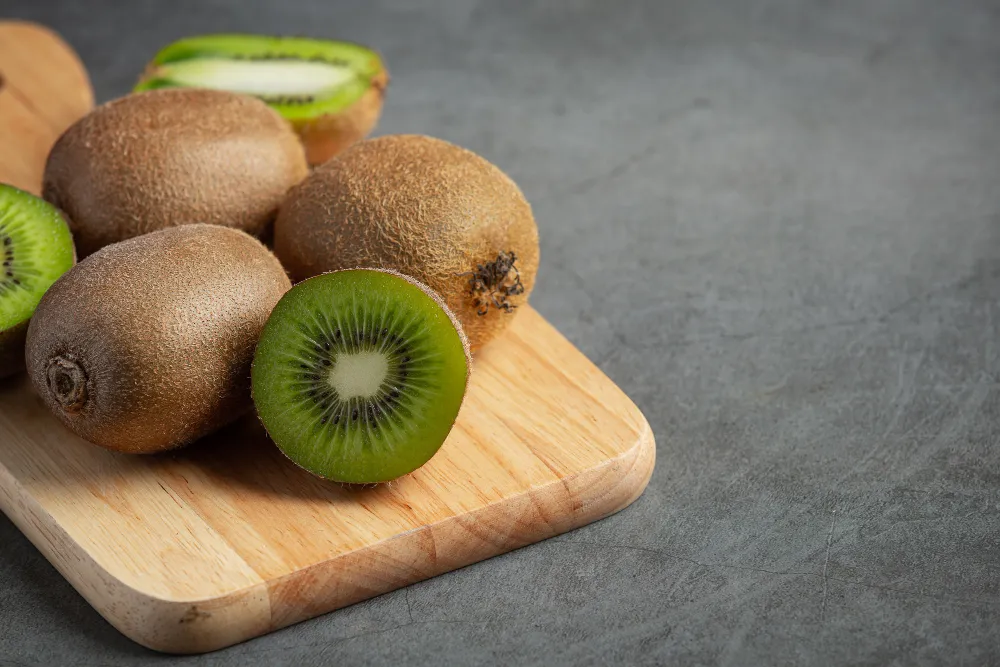
Imagine strolling through a bustling farmer’s market, the air filled with the sweet aroma of ripe berries and exotic fruits. Your eyes land on a vibrant pile of blueberries, their deep indigo hue practically glowing under the morning sun. Next to them, a vendor offers samples of tart goji berries, claiming they’re a “superfood” that can boost your energy and fight aging. You take a bite, intrigued by the promise of health in every juicy morsel. But what makes these fruits so special? The answer lies in their antioxidants—powerful compounds that protect your body from damage and promote vibrant health. In this deep dive, we’ll explore the world of superfruits packed with antioxidants, uncover their benefits, and share practical ways to incorporate them into your life. Let’s embark on this colorful journey together!
What Are Superfruits and Why Do Antioxidants Matter?
Superfruits are nutrient-dense fruits celebrated for their exceptional health benefits, particularly their high antioxidant content. Antioxidants are molecules that neutralize free radicals—unstable atoms in your body that can damage cells, accelerate aging, and contribute to chronic diseases like heart disease and cancer. By including antioxidant-rich superfruits in your diet, you’re essentially giving your body a natural defense system. According to the National Institutes of Health, antioxidants like vitamins C and E, flavonoids, and polyphenols play a critical role in reducing oxidative stress, which is linked to inflammation and aging.
Think of your body as a bustling city. Free radicals are like reckless drivers causing chaos, while antioxidants act as traffic controllers, keeping things in order. Superfruits, with their vibrant colors and potent compounds, are the superheroes of this city, swooping in to restore balance. But not all fruits are created equal—superfruits stand out for their concentrated nutrient profiles, offering more than just a sweet treat.
The Science Behind Antioxidants in Superfruits
To truly appreciate superfruits, let’s peek into the science. Antioxidants work by donating electrons to free radicals, stabilizing them before they can wreak havoc on your cells. Superfruits are particularly rich in polyphenols, flavonoids, and anthocyanins—compounds that give fruits their vivid colors and health-boosting properties. A 2018 study published in the Journal of Agricultural and Food Chemistry found that berries like blueberries and blackberries have some of the highest antioxidant capacities among fruits, thanks to their anthocyanin content.
But it’s not just about fighting free radicals. Antioxidants also support your immune system, improve skin health, and may even enhance brain function. For example, I remember chatting with a nutritionist friend who swore by acai bowls for her glowing skin. She explained that the antioxidants in acai berries help protect skin cells from environmental damage, like UV rays and pollution. It’s like giving your skin a daily dose of armor! Let’s explore some of the top superfruits and what makes them so powerful.
Top Superfruits Packed with Antioxidants
Here’s a rundown of the most potent superfruits, each with unique antioxidant profiles and health benefits. These fruits aren’t just delicious—they’re nutritional powerhouses backed by science.
Blueberries: The Tiny Titans
Blueberries are often hailed as the king of antioxidant-rich fruits. These small, juicy berries are loaded with anthocyanins, which give them their deep blue color and protect against heart disease and cognitive decline. A study from the American Heart Association showed that regular blueberry consumption can lower blood pressure and improve cardiovascular health. I’ve added a handful of blueberries to my morning smoothie for years, and not only do they add a burst of flavor, but they also give me peace of mind knowing I’m supporting my heart.
- Key Antioxidants: Anthocyanins, vitamin C, flavonoids
- Benefits: Improves heart health, boosts brain function, reduces inflammation
- How to Enjoy: Add to smoothies, oatmeal, or eat fresh as a snack
Acai Berries: The Amazonian Superstars
Hailing from the Amazon rainforest, acai berries are a trendy superfruit known for their rich, chocolatey flavor. They’re packed with anthocyanins and healthy fats, making them a unique addition to the superfruit family. According to Harvard Health, acai berries may help reduce cholesterol levels and support weight management. My first acai bowl was a revelation—creamy, tart, and topped with granola, it felt like dessert but packed a nutritional punch.
- Key Antioxidants: Anthocyanins, vitamin A, polyphenols
- Benefits: Supports heart health, promotes skin health, aids digestion
- How to Enjoy: Blend into smoothies, make acai bowls, or mix into yogurt
Goji Berries: The Ancient Elixir
Goji berries have been used in traditional Chinese medicine for centuries, and for good reason. These bright red berries are rich in beta-carotene, vitamin C, and zeaxanthin, which support eye health and immunity. A 2017 study in the Journal of Nutrition found that goji berries may improve immune function and reduce oxidative stress. I once tried goji berry tea at a wellness retreat, and its subtle sweetness was surprisingly refreshing—a perfect way to sip on antioxidants.
- Key Antioxidants: Beta-carotene, zeaxanthin, vitamin C
- Benefits: Enhances immunity, protects eye health, fights fatigue
- How to Enjoy: Steep in tea, add to trail mix, or sprinkle on salads
Pomegranates: The Jewel of Antioxidants
Pomegranates are like nature’s rubies, bursting with juicy seeds called arils. They’re rich in punicalagins, a type of polyphenol with three times the antioxidant activity of green tea. The Mayo Clinic notes that pomegranates may reduce inflammation and protect against cancer. I’ll never forget the first time I cracked open a pomegranate—the vibrant seeds were a hassle to extract, but their tart, sweet flavor made it worth the effort.
- Key Antioxidants: Punicalagins, anthocyanins, vitamin C
- Benefits: Reduces inflammation, supports heart health, may prevent cancer
- How to Enjoy: Sprinkle seeds on salads, juice them, or eat fresh
Cherries: The Tart Powerhouses
Tart cherries, in particular, are antioxidant all-stars, thanks to their high levels of anthocyanins and melatonin, which can improve sleep quality. A study from the University of Michigan found that tart cherry juice can reduce muscle soreness and inflammation in athletes. After a long hike last summer, I sipped on tart cherry juice, and my muscles felt noticeably less achy the next day—a small but mighty win!
- Key Antioxidants: Anthocyanins, melatonin, vitamin C
- Benefits: Improves sleep, reduces muscle soreness, fights inflammation
- How to Enjoy: Drink tart cherry juice, add to smoothies, or bake into desserts
Comparing Superfruits: Which Packs the Biggest Punch?
To help you choose the best superfruits for your needs, here’s a comparison table highlighting their antioxidant content and key benefits.
Superfruit Showdown: Antioxidant Power Compared
| Superfruit | Key Antioxidants | ORAC Score (per 100g) | Top Benefits | Best For |
|---|---|---|---|---|
| Blueberries | Anthocyanins, Vitamin C | 9,621 | Heart health, brain function | Everyday snacks, smoothies |
| Acai Berries | Anthocyanins, Vitamin A | 102,700 | Skin health, cholesterol management | Acai bowls, desserts |
| Goji Berries | Beta-carotene, Zeaxanthin | 3,290 | Eye health, immunity | Teas, trail mixes |
| Pomegranates | Punicalagins, Anthocyanins | 4,479 | Anti-inflammatory, cancer prevention | Juices, salads |
| Cherries | Anthocyanins, Melatonin | 3,747 | Sleep support, muscle recovery | Juices, post-workout snacks |
Note: ORAC (Oxygen Radical Absorbance Capacity) scores measure antioxidant capacity, with higher scores indicating greater antioxidant power. Data sourced from USDA.
This table shows that acai berries have an exceptionally high ORAC score, making them a top choice for antioxidant power. However, each superfruit offers unique benefits, so mixing and matching them in your diet is the best approach.
How to Incorporate Superfruits into Your Daily Life
Adding superfruits to your diet doesn’t have to be complicated. Here are some practical, creative ways to enjoy them:
- Smoothies and Bowls: Blend blueberries, acai, or cherries with spinach, banana, and almond milk for a nutrient-packed breakfast. Check out Smoothie Recipes for inspiration.
- Snacks and Trail Mixes: Combine goji berries with nuts and dark chocolate for a healthy, portable snack.
- Salads and Desserts: Sprinkle pomegranate seeds on a kale salad or add blueberries to yogurt parfaits for a sweet twist.
- Juices and Teas: Sip on tart cherry juice post-workout or steep goji berries in hot water for a soothing tea.
I’ve found that keeping a stash of frozen superfruits in my freezer is a game-changer. They’re perfect for quick smoothies, and freezing doesn’t significantly reduce their antioxidant content, according to WebMD.
Potential Risks and Considerations
While superfruits are generally safe, there are a few things to keep in mind. Overconsuming certain fruits, like goji berries, may interact with medications like blood thinners, as noted by the Cleveland Clinic. Additionally, some superfruits, such as acai, can be high in natural sugars, so moderation is key, especially for those managing blood sugar levels. Always consult a healthcare provider if you’re unsure about adding new foods to your diet.
FAQ: Your Superfruit Questions Answered
What makes a fruit a “superfruit”?
A superfruit is defined by its high nutrient density, particularly its antioxidant content, which offers significant health benefits like reducing inflammation and supporting heart health.
Are fresh superfruits better than frozen or dried?
Fresh, frozen, and dried superfruits all retain significant antioxidant properties. Frozen fruits are often picked at peak ripeness, preserving nutrients, while dried fruits like goji berries are concentrated but may contain added sugars.
Can superfruits help with weight loss?
While superfruits alone won’t melt pounds, their fiber and nutrient content can support a balanced diet. Acai and blueberries, for example, may help with satiety and metabolism, per Healthline.
How many superfruits should I eat daily?
Aim for 1–2 servings (about ½ cup each) of superfruits daily as part of a varied diet. Mix different types to maximize benefits.
Are there any side effects of eating too many superfruits?
Overconsumption may lead to digestive issues due to high fiber or sugar content. Certain fruits, like goji berries, may interact with medications, so consult a doctor if needed.
Conclusion: Embrace the Power of Superfruits
As we’ve journeyed through the vibrant world of superfruits, it’s clear that these tiny powerhouses are more than just a trendy buzzword—they’re nature’s gift to our health. From the heart-protecting anthocyanins in blueberries to the skin-loving polyphenols in acai, each superfruit brings something unique to the table. My own experience with superfruits has been transformative; adding a handful of blueberries to my morning routine or sipping tart cherry juice after a workout has made me feel more energized and resilient. The science backs it up, too—antioxidants are a cornerstone of preventive health, helping us combat the daily wear and tear of modern life.
So, what’s your next step? Start small. Pick one or two superfruits that excite you and experiment with them in your meals. Maybe blend an acai smoothie for breakfast or toss some pomegranate seeds into your salad. Visit your local farmer’s market or grocery store, explore the vibrant colors, and let your senses guide you. For more inspiration, check out resources like Eat This, Not That for recipes and tips on incorporating superfoods into your diet. By making superfruits a regular part of your life, you’re not just eating—you’re investing in a healthier, more vibrant you. Here’s to thriving, one delicious bite at a time!
